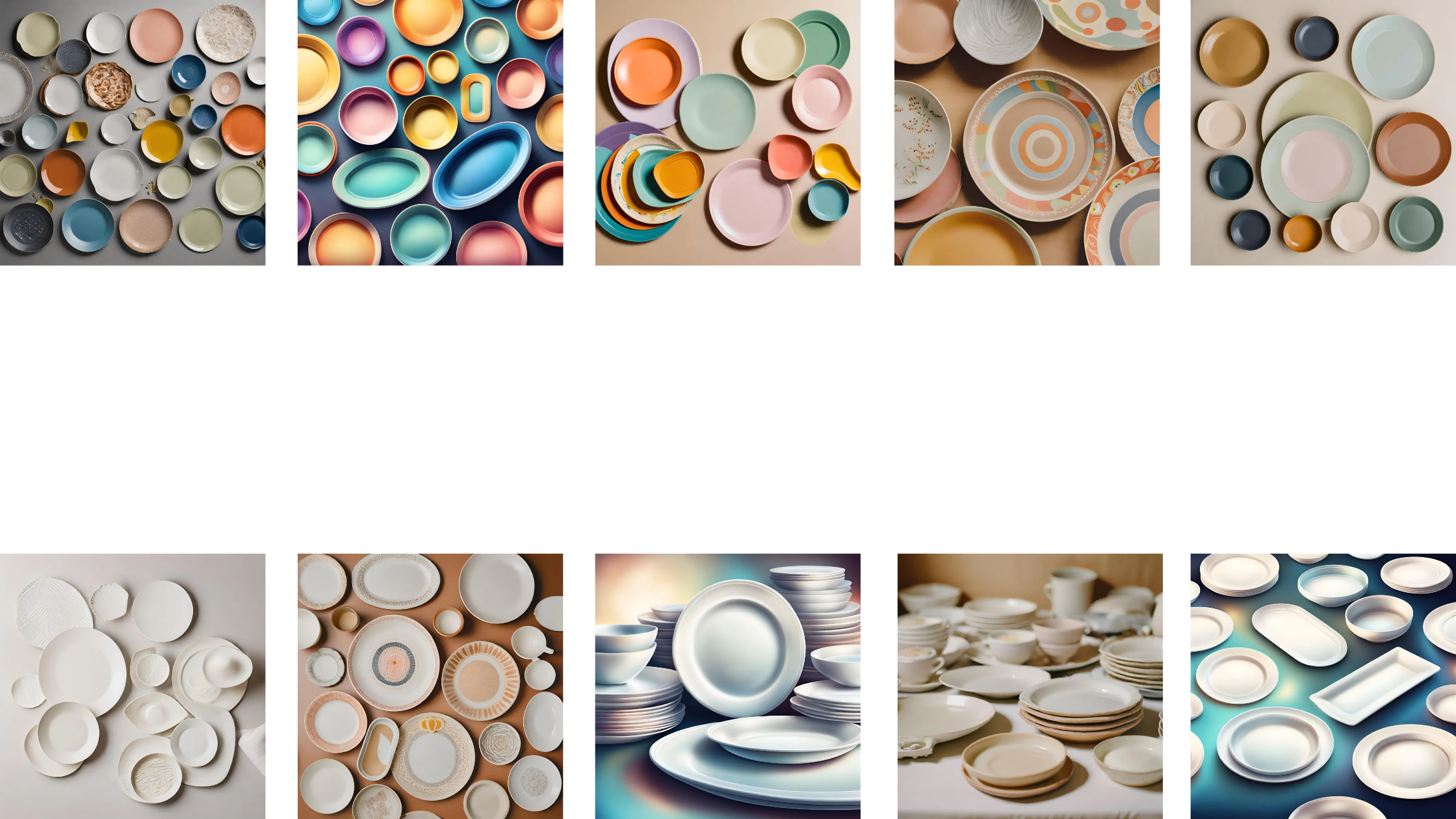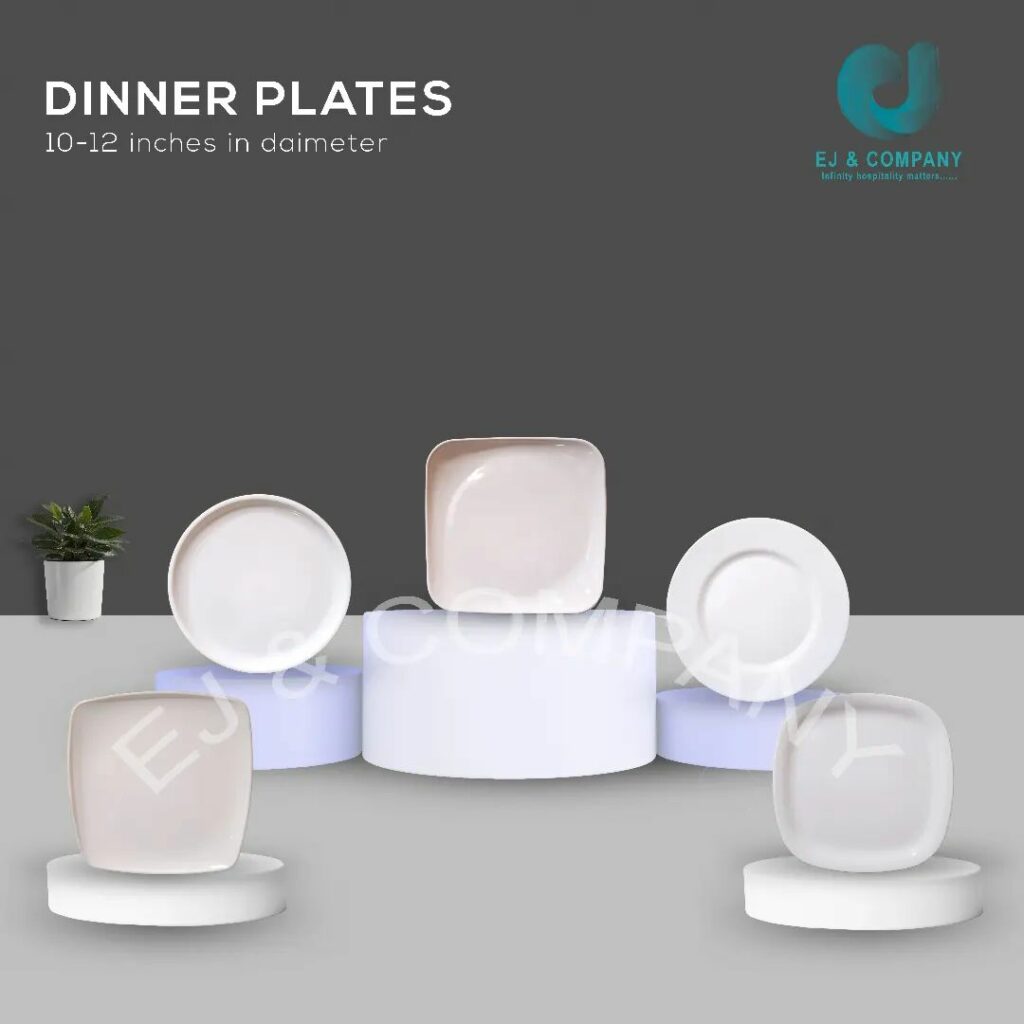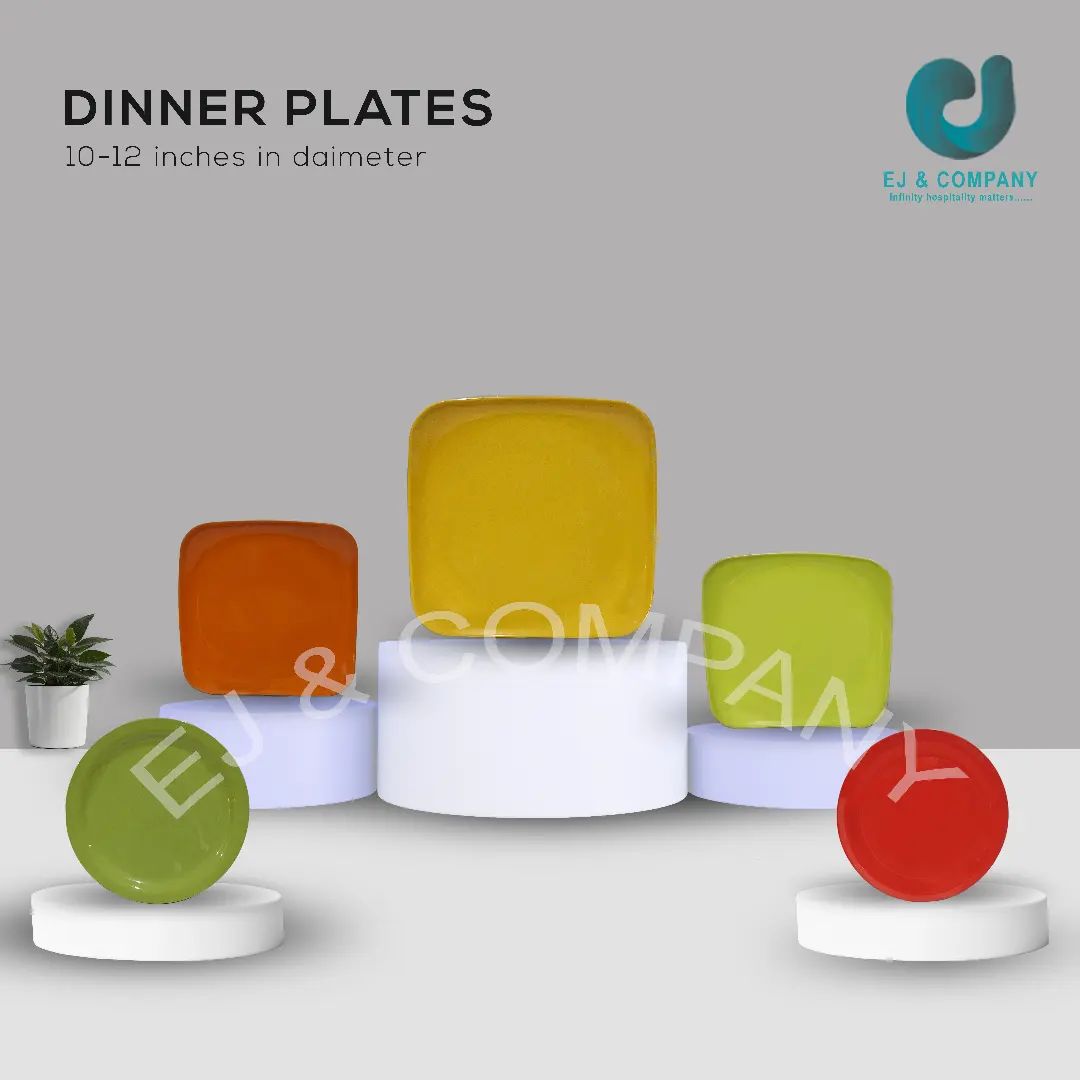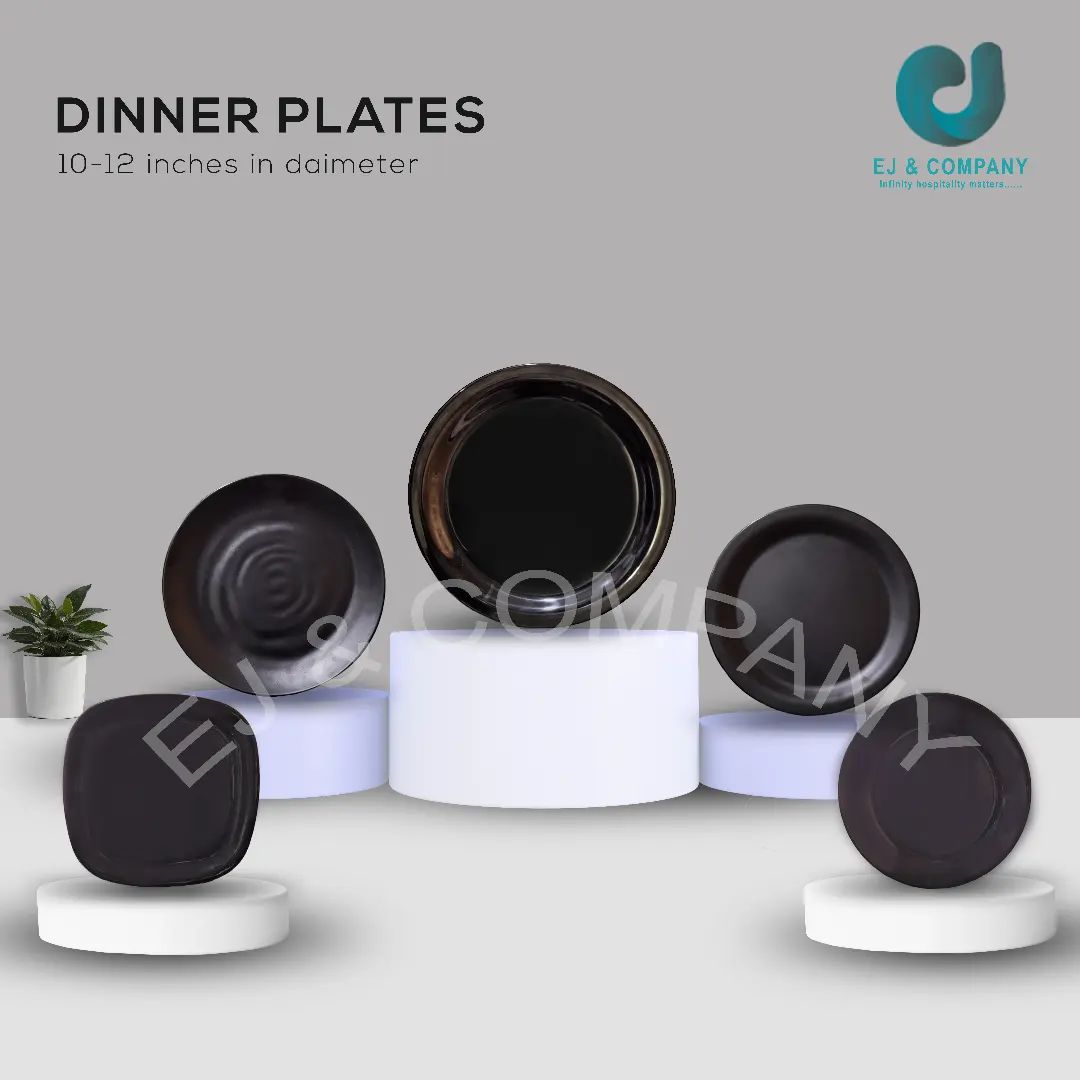Introduction
Plates are commonly used for serving and eating food. They come in various shapes, sizes, and designs to suit different purposes and personal preferences.
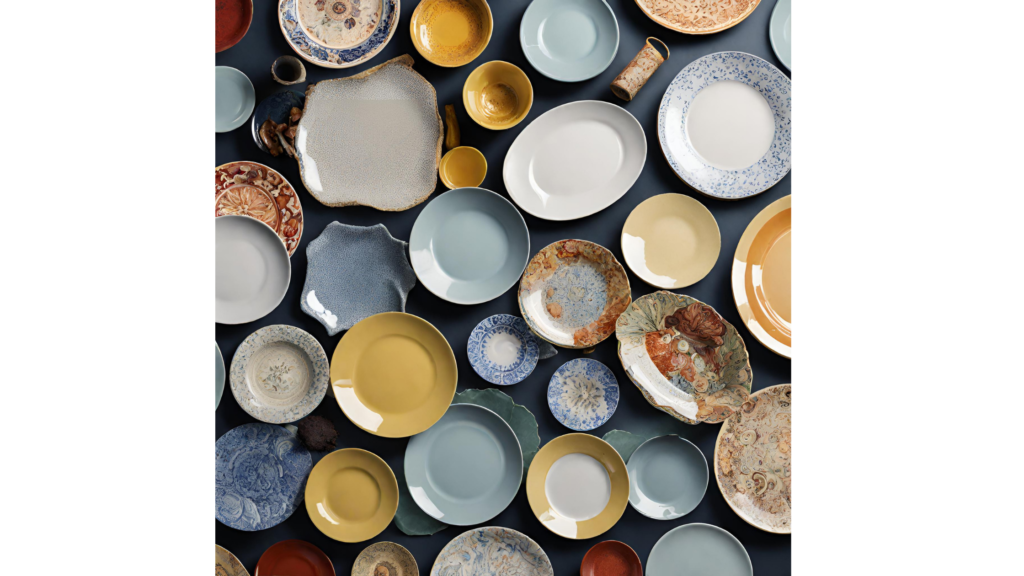
Materials Used
Plates are typically made of different materials such as ceramic, porcelain, bone china, glass, or melamine. Each material has its own advantages and disadvantages. For example, ceramic and porcelain plates are elegant and often used for special occasions, while melamine plates are more durable and suitable for outdoor use.
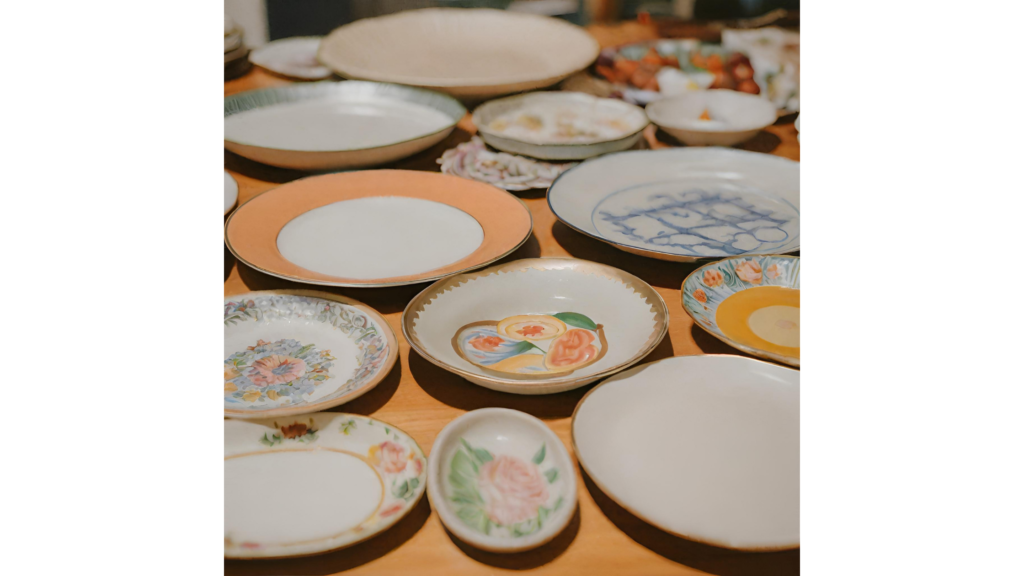
Plate Shapes
Plates can be round, square, rectangular, or even uniquely shaped. The shape of a plate can be chosen based on the type of food being served or the aesthetic preferences of the user. Round plates are the most common and versatile, while square or rectangular plates can add a modern or artistic touch to a table setting.
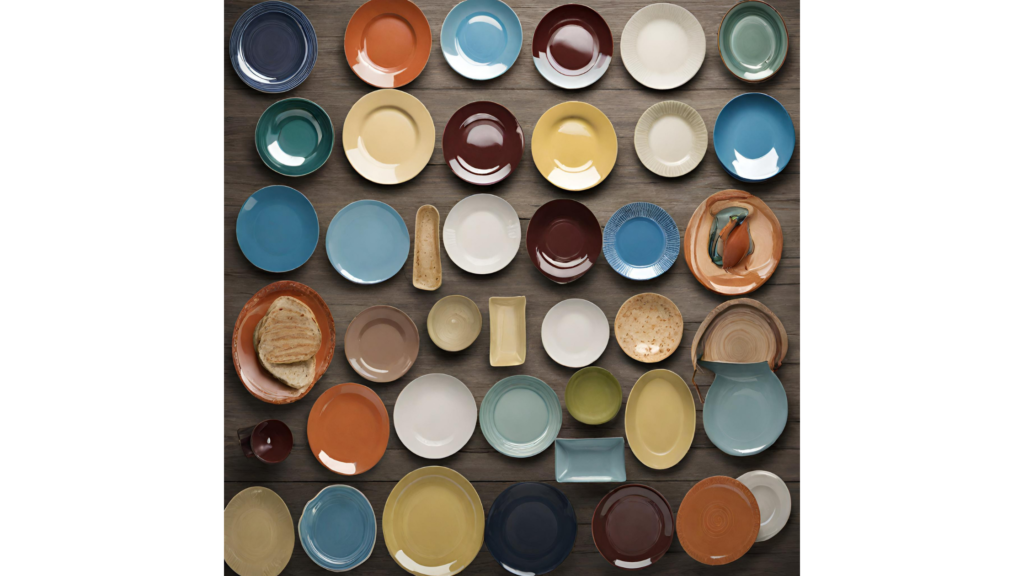
Plate Sizes
The size and depth of a plate also vary. Dinner plates are typically larger in size and used for serving main courses, while smaller plates like dessert plates or salad plates are used for serving specific types of food.

The depth of a plate can vary as well; shallow plates are suitable for serving appetizers or pasta dishes, while deeper plates are used for dishes with sauces or soups.Plates come in different sizes to accommodate various types of food and presentation needs.
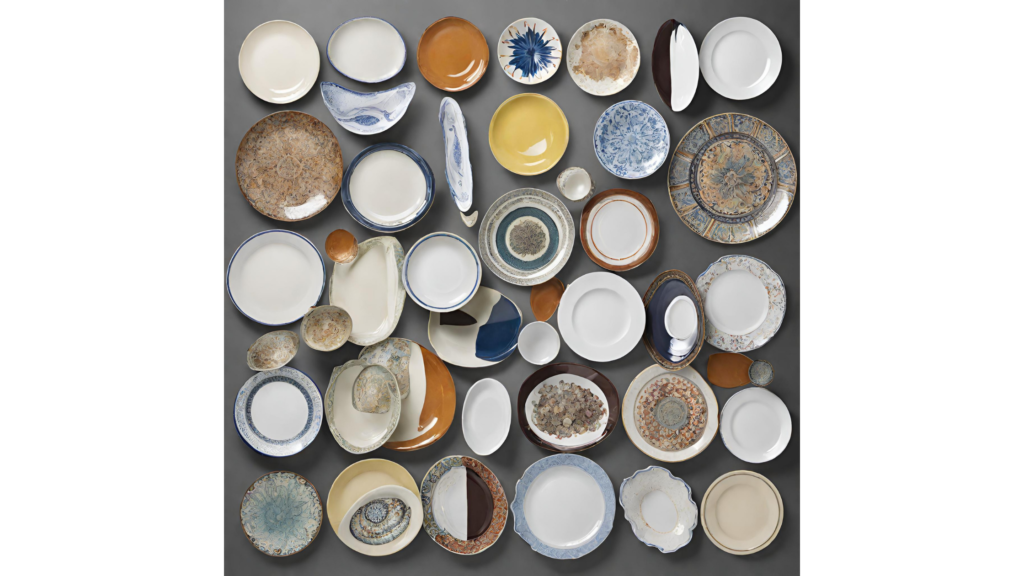
Common Plate Sizes
Here are some common sizes of plates:
1. Dinner Plate :
This is the largest plate typically used for serving the main course during a meal. It is usually around 10-12 inches in diameter and provides ample space for a variety of dishes.
2. Salad Plate :
Also known as a side plate or appetizer plate, this plate is smaller than a dinner plate and is used for serving salads, starters, or smaller portions. It is usually around 7-9 inches in diameter.
3. Dessert Plate :

This plate is even smaller and is specifically designed for serving desserts or sweet treats. It is typically around 6-8 inches in diameter.
4. Bread and Butter Plate :
This plate is quite small, usually around 5-6 inches in diameter. It is used for serving bread, butter, or other accompaniments alongside a meal.
5. Charger Plate :
Charger plates are larger decorative plates that are placed beneath the actual dinner plate. They are often used in formal table settings to add elegance and provide a base for the other dishes.
6. Breakfast Plate :
This plate is larger than a salad plate but smaller than a dinner plate. It is typically used for serving breakfast items like scrambled eggs, bacon, pancakes, or toast.
The specific sizes mentioned above are general guidelines, and variations are possible based on cultural preferences and culinary traditions. It’s important to choose the appropriate size of plate based on the type of food being served and the desired presentation style.

Plates can also be decorated with various designs, patterns, or colors. Some people prefer simple and minimalist designs, while others may opt for intricate patterns or vibrant hues to match their dining theme or personal style.
Care and Maintenance
Proper care and maintenance of plates are important to ensure their longevity. Most plates can be safely used in the dishwasher, but hand washing is recommended for delicate or antique plates. Avoid using abrasive cleaning tools or harsh chemicals that may damage the surface of the plate.
Conclusion
In conclusion, plates are essential kitchen and dining utensils used for serving and enjoying meals. With their wide variety of materials, shapes, sizes, and designs, plates offer plenty of options to suit different preferences and occasions. Whether it’s for everyday use or special gatherings, choosing the right plates can enhance the dining experience and bring a touch of style to the table.

